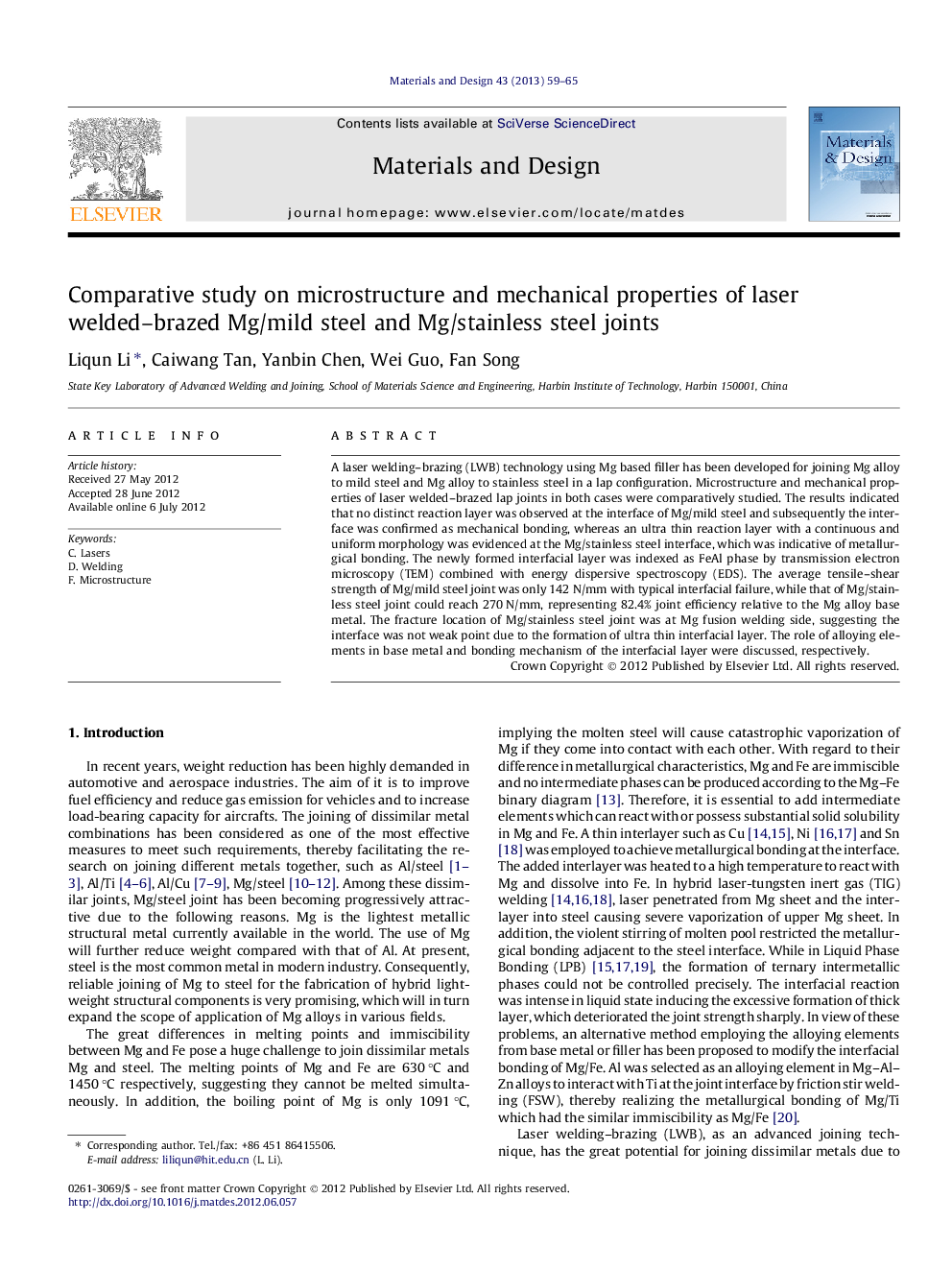| Article ID | Journal | Published Year | Pages | File Type |
|---|---|---|---|---|
| 830385 | Materials & Design (1980-2015) | 2013 | 7 Pages |
A laser welding–brazing (LWB) technology using Mg based filler has been developed for joining Mg alloy to mild steel and Mg alloy to stainless steel in a lap configuration. Microstructure and mechanical properties of laser welded–brazed lap joints in both cases were comparatively studied. The results indicated that no distinct reaction layer was observed at the interface of Mg/mild steel and subsequently the interface was confirmed as mechanical bonding, whereas an ultra thin reaction layer with a continuous and uniform morphology was evidenced at the Mg/stainless steel interface, which was indicative of metallurgical bonding. The newly formed interfacial layer was indexed as FeAl phase by transmission electron microscopy (TEM) combined with energy dispersive spectroscopy (EDS). The average tensile–shear strength of Mg/mild steel joint was only 142 N/mm with typical interfacial failure, while that of Mg/stainless steel joint could reach 270 N/mm, representing 82.4% joint efficiency relative to the Mg alloy base metal. The fracture location of Mg/stainless steel joint was at Mg fusion welding side, suggesting the interface was not weak point due to the formation of ultra thin interfacial layer. The role of alloying elements in base metal and bonding mechanism of the interfacial layer were discussed, respectively.
► Mg/mild steel and Mg/stainless steel were joined successfully using AZ31 filler. ► Comparative analysis of microstructure and mechanical properties in both cases. ► Metallurgical bonding was achieved at the Mg/stainless steel interface. ► Newly formed FeAl phase improved the interfacial bonding and joint strength. ► Cr from stainless steel accelerated mutual diffusion and reaction of Fe and Al.
